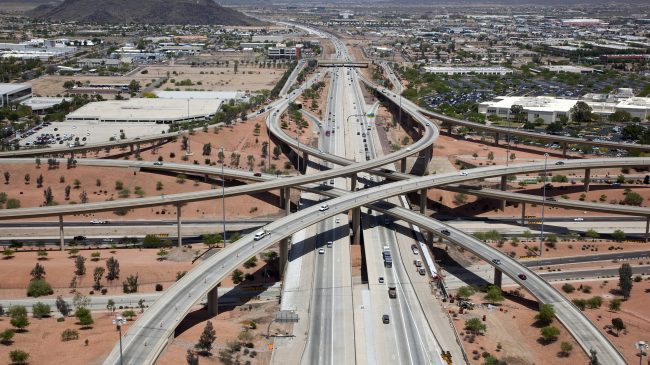High-occupancy toll lanes provide commuters an option of paying a typically small variable-toll that enables them to get into a free-flowing lane, bypass traffic congestion, and reach their destinations more quickly.
In some cities, express buses, featuring premium buses with guaranteed seating and Wi-Fi, operate in these lanes as well in an effort to offer faster and more convenient trips. The buses and registered vanpools, as part of efforts to boost mass transit usage, are allowed to use the high-occupancy toll (HOT) lanes for free.
Still, some have raised concerns that high-occupancy toll lanes only benefit wealthy drivers who can afford to regularly pay the tolls. There are typically five concerns that policymakers and stakeholders express about HOT Lanes:
- HOT Lanes are used by the wealthy only;
- Tolling is regressive;
- HOT lanes are double taxation;
- ‘Free’ highway lanes are preferable to HOT lanes;
- And, mass transit projects are preferable to HOT lanes.
Let’s address these claims and concerns.
Claim 1: HOT Lanes are used only by wealthy drivers.
The claim that high-occupancy toll lanes are used by the wealthy is incorrect. HOT lanes are used by commuters across the income spectrum. While opponents of toll lanes often refer to them as “Lexus Lanes,” data shows the five most common vehicle types in the lanes are the Toyota Camry, Honda Accord, Toyota Corolla, Honda Civic, and Ford F-150. None of these are considered “luxury” vehicles.
Studies have also shown that working class commuters are more satisfied with HOT lanes than wealthy commuters. This may result from workers who are more likely to have rigid schedules being able to use the lanes when they absolutely need to be somewhere on time. For example, if a parent is running late to pick up their child at daycare, paying a small toll to arrive on-time is usually far cheaper than arriving late and paying the late fees.
Claim 2: Tolling is regressive.
While some argue tolling is regressive, it is actually less regressive than most other transportation taxes and fees. The sales tax, for example, which is used to fund roadways and mass transit in some states, is the most regressive way to fund transportation. Tolls can also be less regressive than the gas tax, particularly for low-income drivers with older, less fuel-efficient vehicles. One reason the gas tax isn’t a sustainable source of funding for transportation projects is that drivers are buying electric vehicles, hybrids, and more fuel-efficient vehicles. And when they do, they drive further on a gallon of gas and pay less in fuel taxes. With high-occupancy toll lanes, the users of the lanes pay for their operation and maintenance.
Claim 3: Toll lanes are double taxation.
Toll lanes should be built, maintained, and operated by toll revenues to the largest extent possible. The tolls drivers pay to use variably-priced HOT lanes are designed to always keep traffic flowing at free-flow speeds, offering drivers, businesses, and emergency vehicles a congestion-free option. Without tolls, traffic speeds in the lanes would be expected to be the same as in the more congested general-purpose lanes.
Toll revenue is used to build, maintain, and operate the HOT lanes. Day-to-day operations for a highway, including clearing accidents, litter, and snow, as well as traffic enforcement have real costs and should be paid for by the users.
Claim 4: ‘Free’ highway lanes are preferable to HOT lanes.
While motorists may prefer ‘free’ general purpose lanes that do not charge tolls, those highway lanes have significant costs. Most cities and states are grappling with major infrastructure needs they don’t have the money to pay for. And adding ‘free’ lanes to meet the needs of growing cities and urban areas often simply isn’t financially possible.
An additional revenue source is often needed to rebuild, expand, and maintain highways. With HOT lanes, the tolls can provide all, or part, of the revenue to build, maintain, and operate the lanes. This structure allows cities and states to move ahead with projects that they simply don’t have the taxpayer funding for.
Claim 5: Mass transit projects are preferable to HOT lanes.
Mass transit benefits greatly from toll lanes. Transit is a critical component of most HOT lanes. In HOT lanes, buses and registered vanpools can offer express services to commuters and travel in the lanes for free. Sometimes, two- or three-person carpools can also use the lanes for free or at a discounted price. HOT lanes provide a semi-exclusive guideway for mass transit vehicles that the other users of the toll lanes are funding. This transit option comes at a small fraction of the price of other transit projects, particularly rail.
Reason’s Debatable Ideas series examining transportation and infrastructure issues is available here.

